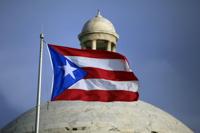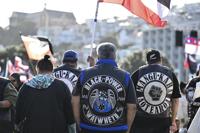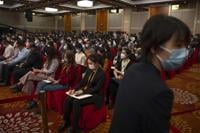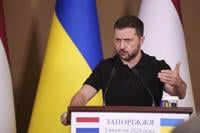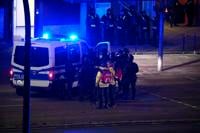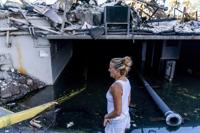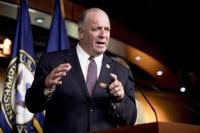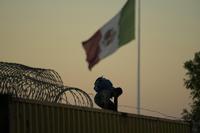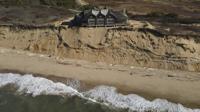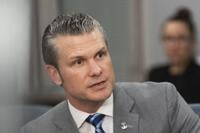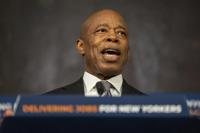SAN JUAN, Puerto Rico (AP) — Puerto Rico legislators on Monday held a contentious public hearing on a governor-backed bill that would eliminate renewable energy goals and extend operations of the island's lone coal-fired plant, long accused of polluting low-income communities.
The bill challenges Puerto Rico's four-year , supported by U.S. federal funding, to help ease chronic power outages on an island trying to wean itself off fossil fuels.
But with that support expected to vanish under , coupled with concerns that limited renewable energy projects are not helping offset outages, Puerto Rico’s newly elected Gov. Jenniffer González, a Trump supporter, recently filed a bill to scrap a law calling for renewable energy to meet 40% of the U.S. territory’s needs by 2025 and 60% by 2040.
“Once we have electricity, we can talk about resuming meeting the objectives,” González said late last week.
But environmentalists and health officials are pushing back.
“We are alarmed that this project is being considered,” said Nadya Rivera, of Puerto Rico Clinicians for Climate Action, who warned of the consequences of burning coal on people’s health.
Puerto Rico has one of the world’s highest asthma rates, and medical doctors have testified in public hearings that they’ve seen in the island’s southern region since the plant began operating.
A push to keep burning coal
Josué Colón, Puerto Rico’s newly appointed “energy czar,” recently said that burning coal for energy should continue through 2035 even though public policy dictates that the island stop burning coal in 2028.
The coal-burning plant located in the southern coastal town of Guayama produces up to 20% of power consumed in Puerto Rico, generating an average of 510 megawatts a year, said Jesús Bolinaga, president of AES Puerto Rico, which runs the plant.
Officials have claimed that shutting down the plant as legally mandated by late 2027 would result in a power generation deficit. But environmentalists argue otherwise.
During Monday’s hearing, legislators questioned why AES Puerto Rico and the government did not take steps to convert the coal-burning plant since the renewable energy public policy was approved in 2019.
“On our behalf, we made all the efforts that were necessary,” Bolinaga said.
Rep. Héctor Ferrer and other legislators condemned the island’s government for not acting sooner.
“These government officials not only failed the (island)…but all of its people,” he said.
Legislators said there are no studies on the cost or viability of converting the plant into one that would use clean energy, with Bolinaga noting it took eight years to build the current plant.
“If Puerto Rico wants those megawatts, we have to move quickly,” he said of extending operations of the coal-burning plant, warning it was given only the necessary maintenance to last until late 2027.
A call to delay renewable energy goals
The project submitted by the governor upholds a 2050 goal that meet 100% of Puerto Rico power needs, but eliminating the other goals means that final one will not be achieved, said Pedro Saadé, a Puerto Rico attorney who is an expert in environmental law.
“This bill means the death of renewable energy in Puerto Rico,” he said, suggesting that the near- and mid-term goals be delayed, not eliminated.
In addition to the push to authorize another 10 years of coal burning on Puerto Rico, other fossil-fuel projects are being considered.
Mary Carmen Zapata, director of Puerto Rico’s Electric Power Authority, recently told El Nuevo Día newspaper that she believes a new fossil fuel-based plant in the island’s southern region is needed in addition to a natural gas plant being built in Puerto Rico’s capital that is expected to start operating in 2028.
Despite the push to eliminate certain renewable energy goals, the governor announced Sunday a $767 million contract with Tesla funded by the U.S. government to buy 430 megawatts in energy storage systems, which she said would help stabilize Puerto Rico’s power grid. The project was initiated under previous administrations in the U.S. and Puerto Rico.
The length of power outages in Puerto Rico increased 11% last year as the island struggles to rebuild an electric grid that already lacked maintenance and investment when it was razed by Hurricane Maria, a Category 4 storm that struck in September 2017.
The latest mass outage to hit Puerto Rico was on Dec. 31.
On Monday, Puerto Rico's representative in Congress, Pablo José Hernández, urged Trump to declare a federal emergency on the island's energy crisis.
“It is a problem, and it needs a solution,” he said.
____
Follow AP’s coverage of Latin America and the Caribbean at


